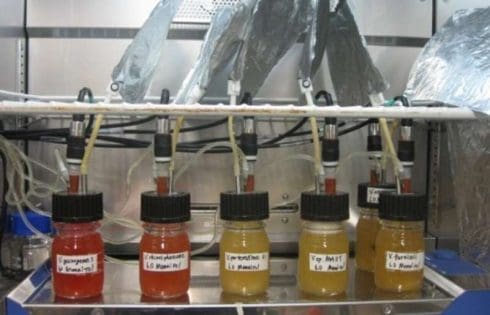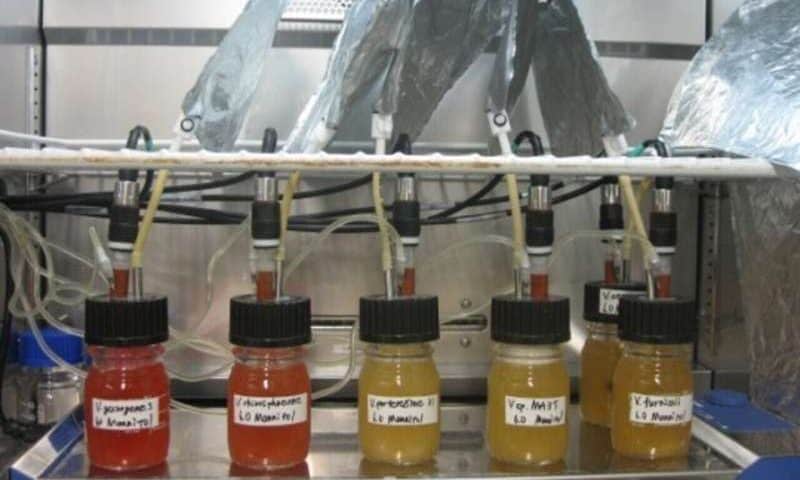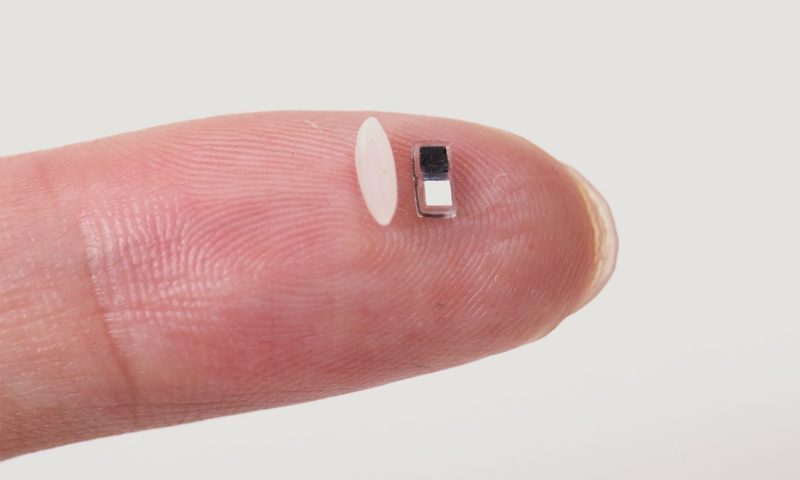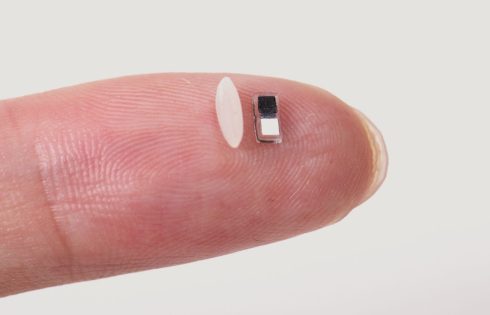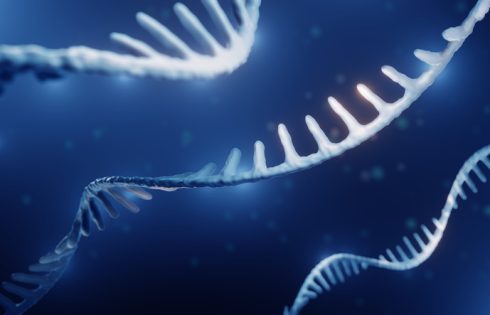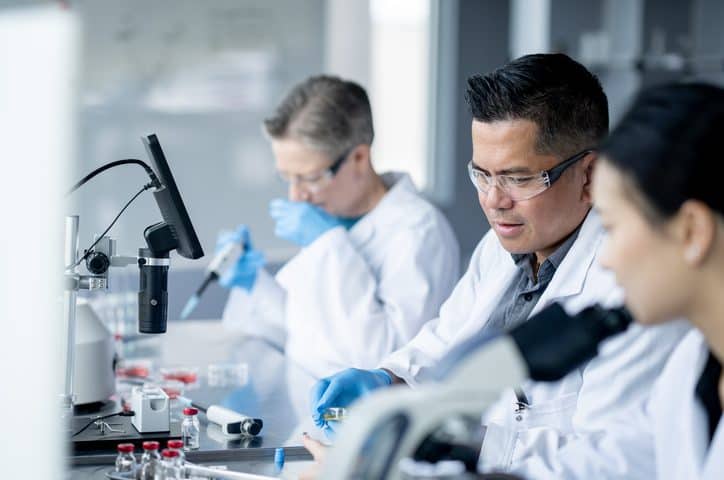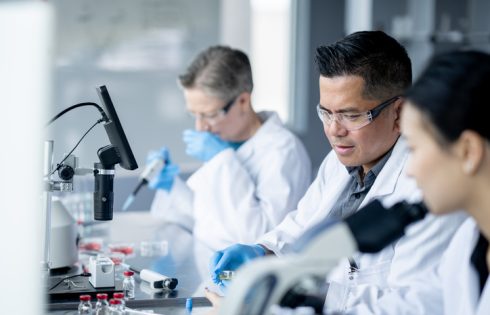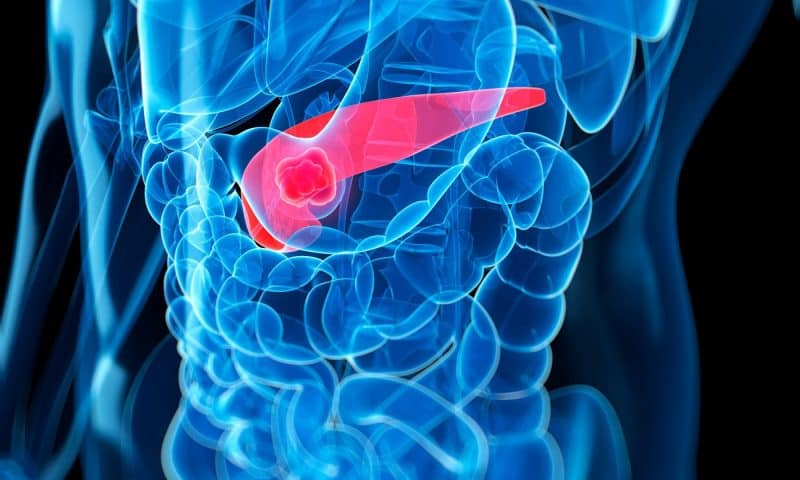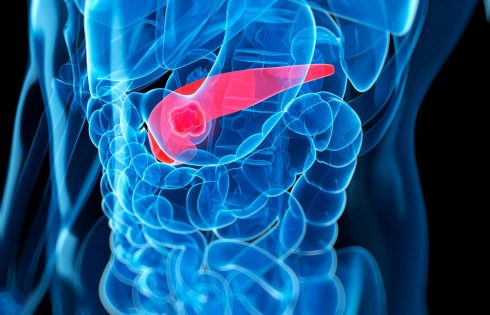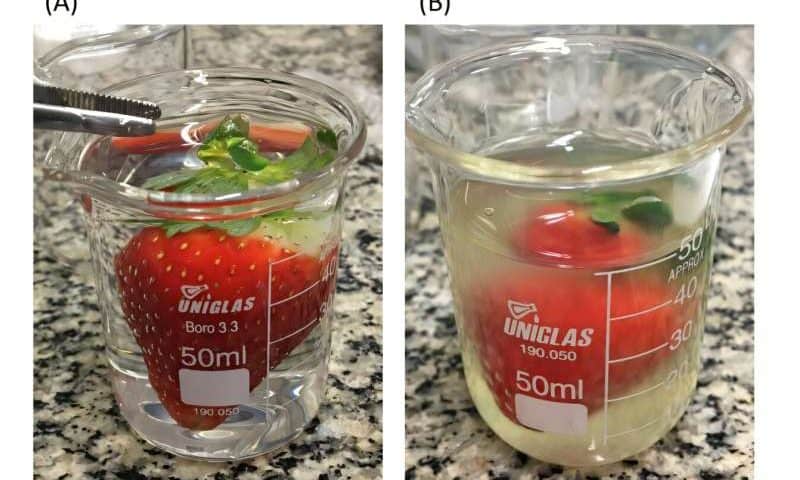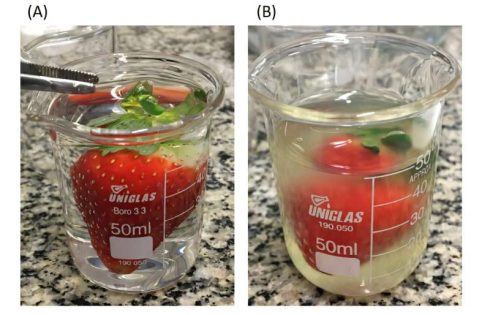
A newly reported study by a Stanford Medicine-led team has provided what the researchers suggest is the strongest evidence yet that a vaccine can reduce the risk of dementia. Taking advantage of a particular public health policy in Wales that means eligibility for the shingles (herpes zoster) vaccine is based on an individual’s exact date of birth, the team analyzed the health records of older adults, discovering that those who received the live attenuated vaccine were 20% less likely to develop dementia over the next seven years than those who did not receive the vaccine.
The findings, published in Nature, support an emerging theory that viruses that affect the nervous system can increase the risk of dementia. In their paper (“A natural experiment on the effect of herpes zoster vaccination on dementia,”) research lead and senior author Pascal Geldsetzer, MD, PhD, assistant professor of medicine, and colleagues, concluded, “Our substantial effect sizes, combined with the relatively low cost of the zoster vaccine, imply that, if these findings are truly causal, the zoster vaccine will be both far more effective as well as cost-effective in preventing or delaying dementia than existing pharmaceutical interventions.”
Shingles, a viral infection that produces a painful rash, is caused by the same virus—varicella zoster virus (VZV)—that causes chicken pox. After people contract chicken pox, usually in childhood, the virus stays dormant in the nerve cells for life. In people who are older or have weakened immune systems, the dormant virus can reactivate and cause shingles.
Dementia affects more than 55 million people worldwide, with an estimated 10 million new cases every year. Decades of dementia research have largely focused on the accumulation of plaques and tangles in the brains of people with Alzheimer’s, the most common form of dementia. But a lack of breakthroughs in prevention or treatment is leading some researchers to explore other avenues, including the role of certain viral infections.
In their newly released Nature paper, Geldsetzer and colleagues pointed out, “Recently, evidence has grown that neurotropic herpesviruses may have a role in the pathogenesis of dementia. One approach to targeting herpesviruses is vaccination.” However the team continued, vaccines are increasingly being recognized as eliciting a broader immune response that can have important off-target effects. To date, they continued, “… studies in cohort and electronic health record data on the effect of vaccination receipt on dementia have simply compared the occurrence of dementia among those who received a given vaccination and those who did not.”
Such studies have to assume that characteristics that are different between vaccinated and unvaccinated individuals—and that are also related to dementia—have been sufficiently well measured and modeled so that there are no remaining factors that might confound any relationship between vaccination receipt and dementia. But, as the team commented, “This assumption of no confounding bias is often implausible because it has to be assumed that the study has detailed data on factors that are difficult to measure, such as personal motivation or health literacy.”
So, while previous studies based on health records have linked the shingles vaccine with lower dementia rates, they could not account for a major source of bias, in that people who are vaccinated also tend to be more health conscious in many difficult-to-measure ways. Behaviors such as diet and exercise, for example, are known to influence dementia rates, but are not included in health records.
“All these associational studies suffer from the basic problem that people who get vaccinated have different health behaviors than those who don’t,” said Geldsetzer. “In general, they’re seen as not being solid enough evidence to make any recommendations on.”
Two years ago Geldsetzer recognized a fortuitous “natural experiment” in the rollout of the shingles vaccine in Wales that offered a potential way to deal with this bias. “To provide causal as opposed to correlational evidence, we take advantage of the fact that, in Wales, eligibility for the zoster vaccine was determined on the basis of an individual’s exact date of birth,” the investigators explained. The vaccine being used at that time contained a live-attenuated, or weakened, form of the virus.
The vaccination program, which began Sept. 1, 2013, specified that anyone who was 79 on that date was eligible for the vaccine for one year. (People who were 78 would become eligible the next year for one year, and so on.) People who were 80 or older on Sept. 1, 2013, were out of luck—they would never become eligible for the vaccine. The authors summarized, “Those born before 2 September 1933 were ineligible and remained ineligible for life, whereas those born on or after 2 September 1933 were eligible for at least one year to receive the vaccine.”
These rules, designed to ration the limited supply of the vaccine, also meant that the slight difference in age between 79- and 80-year-olds made all the difference in who had access to the vaccine. By comparing people who turned 80 just before Sept. 1, 2013, with people who turned 80 just after, the researchers could isolate the effect of being eligible for the vaccine.
The circumstances, well-documented in the country’s health records, were about as close to a randomized controlled trial as you could get without conducting one, Geldsetzer pointed out. “Importantly, individuals who are only a few weeks apart in age are not expected to differ systematically from each other,” the authors commented. “That is, all potential confounding variables are in expectation balanced between our comparison groups.” By taking advantage of what they described as “this unique natural experiment” the scientists could avoid confounding “more credibly” than other studies that had compared vaccine recipients to non-recipients while trying to control for “the myriad of differences” between the groups.
For their reported study, Geldsetzer and colleagues looked at the health records of more than 280,000 older adults who were 71 to 88 years old and did not have dementia at the start of the vaccination program. They focused their analysis on those closest to either side of the eligibility threshold—comparing people who turned 80 in the week before the cutoff with those who turned 80 in the week after. “We know that if you take a thousand people at random born in one week and a thousand people at random born a week later, there shouldn’t be anything different about them on average,” Geldsetzer said. “They are similar to each other apart from this tiny difference in age.”
The same proportion of both groups likely would have wanted to get the vaccine, but only half, those almost 80, were allowed to by the eligibility rules. “What makes the study so powerful is that it’s essentially like a randomized trial with a control group—those a little bit too old to be eligible for the vaccine—and an intervention group—those just young enough to be eligible,” Geldsetzer added.
Over the next seven years, the researchers compared the health outcomes of people closest in age who were eligible and ineligible to receive the vaccine. By factoring in actual vaccination rates—about half of the population who were eligible received the vaccine, compared with almost none of the people who were ineligible—they could derive the effects of receiving the vaccine.
They found that, as expected, the vaccine reduced the occurrence over that seven-year period of shingles by about 37% for people who received the vaccine, similar to what had been found in clinical trials of the vaccine. (The live-attenuated vaccine’s effectiveness wanes over time.)
By 2020, one in eight older adults, who were by then 86 and 87 years of age, had been diagnosed with dementia. But those who received the shingles vaccine were 20% less likely to develop dementia than those who were unvaccinated. “Scaled to account for the fact that not all those who were eligible received the vaccine, we find that actually receiving the zoster vaccine reduced the probability of a new dementia diagnosis by 3.5 (95% CI = 0.6–7.1; P = 0.019) percentage points, corresponding to a relative reduction of 20.0%,” the team wrote. “It was a really striking finding,” Geldsetzer said. “This huge protective signal was there, any which way you looked at the data.”
The scientists searched high and low for other variables that might have influenced dementia risk but found the two groups to be indistinguishable in all characteristics. There was no difference in the level of education between the people who were eligible and ineligible, for example. Those who were eligible were not more likely to get other vaccinations or preventive treatments, nor were they less likely to be diagnosed with other common health conditions, such as diabetes, heart disease, and cancer. “… we have provided evidence from a series of analyses against any of the possible remaining sources of bias being a likely explanation of our findings,” the authors stated.
The only difference was the drop in dementia diagnoses. “Because of the unique way in which the vaccine was rolled out, bias in the analysis is much less likely than would usually be the case,” Geldsetzer said. The team further noted, “By taking advantage of the fact that the unique way in which the zoster vaccine was rolled out in Wales constitutes a natural experiment, and examining each possible remaining source of bias, our study provides evidence that is more likely to be causal in nature than the existing, exclusively associational, evidence on this topic.”
The team did still analyze the data in alternate ways—using different age ranges or looking only at deaths attributed to dementia, for example—but the link between vaccination and lower dementia rates remained. “The signal in our data was so strong, so clear and so persistent,” Geldsetzer said.
In a further finding, the study showed that protection against dementia was much more pronounced in women than in men. “We observed large differences in the effect of zoster vaccination on dementia between women and men, with women benefitting more than men,” the investigators wrote. This could be due to sex differences in immune response or in the way dementia develops, Geldsetzer suggested. Women on average have higher antibody responses to vaccination, for example, and shingles is more common in women than in men.
Whether the vaccine protects against dementia by revving up the immune system overall, by specifically reducing reactivations of the virus or by some other mechanism is still unknown. Also unknown is whether a newer version of the vaccine, which contains only certain proteins from the virus and is more effective at preventing shingles, may have a similar or even greater impact on dementia. “… because the newer recombinant subunit zoster vaccine (Shingrix) replaced the live-attenuated zoster vaccine (Zostavax) in the United Kingdom only in September 2023, which is after our follow-up period ended, our effect estimates apply to the live-attenuated zoster vaccine only,” the authors stated.
Geldsetzer hopes the new findings will inspire more funding for this line of research. “Other than investing into randomized trials, investments into basic science research on the potential role of VZV and the immune response to the zoster vaccine in the pathogenesis of dementia could provide critical mechanistic insights,” the authors further noted. “At least investing a subset of our resources into investigating these pathways could lead to breakthroughs in terms of treatment and prevention,” Geldsetzer added.
In the past two years, his team has replicated the Wales findings in health records from other countries, including England, Australia, New Zealand, and Canada, that had similar rollouts of the vaccine. “We just keep seeing this strong protective signal for dementia in dataset after dataset,” he said. Geldsetzer has set his sights on a large, randomized controlled trial, which would provide the strongest proof of cause and effect. Participants would be randomly assigned to receive the live-attenuated vaccine or a placebo shot. “It would be a very simple, pragmatic trial because we have a one-off intervention that we know is safe,” he noted.
Geldsetzer is seeking philanthropic funding for the trial as the live-attenuated vaccine is no longer manufactured by pharmaceutical companies. And such a trial might not take long to see results. A graph of the Wales data tracking the dementia rates of those who were eligible and ineligible for the vaccine shows the two curves began to separate in about a year and a half.
In a related News & Views, Anupam B. Jena, MD, PhD, at the Department of Health Care Policy at Harvard Medical School and the Department of Medicine, Massachusetts General Hospital, commented that while it’s not yet clear exactly how herpes zoster vaccination lowers the risk of dementia, the reported study has profound implications. “The vaccine could represent a cost-effective intervention that has public-health benefits strongly exceeding its intended purpose,” Jena stated. “Given the substantial economic and social burden of dementia, policymakers and healthcare providers might need to reassess the value of widespread herpes zoster vaccination, particularly in older adults.”
